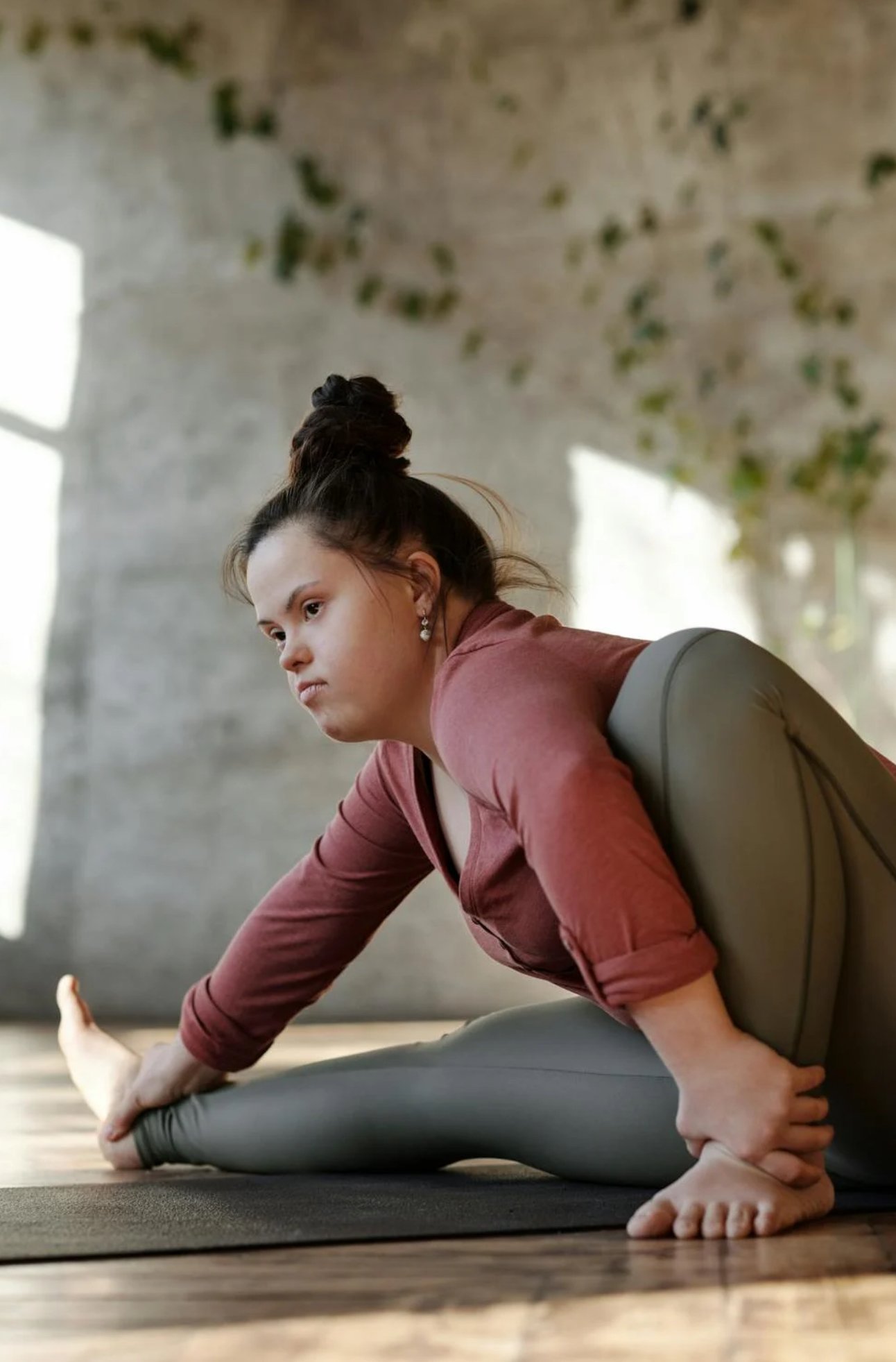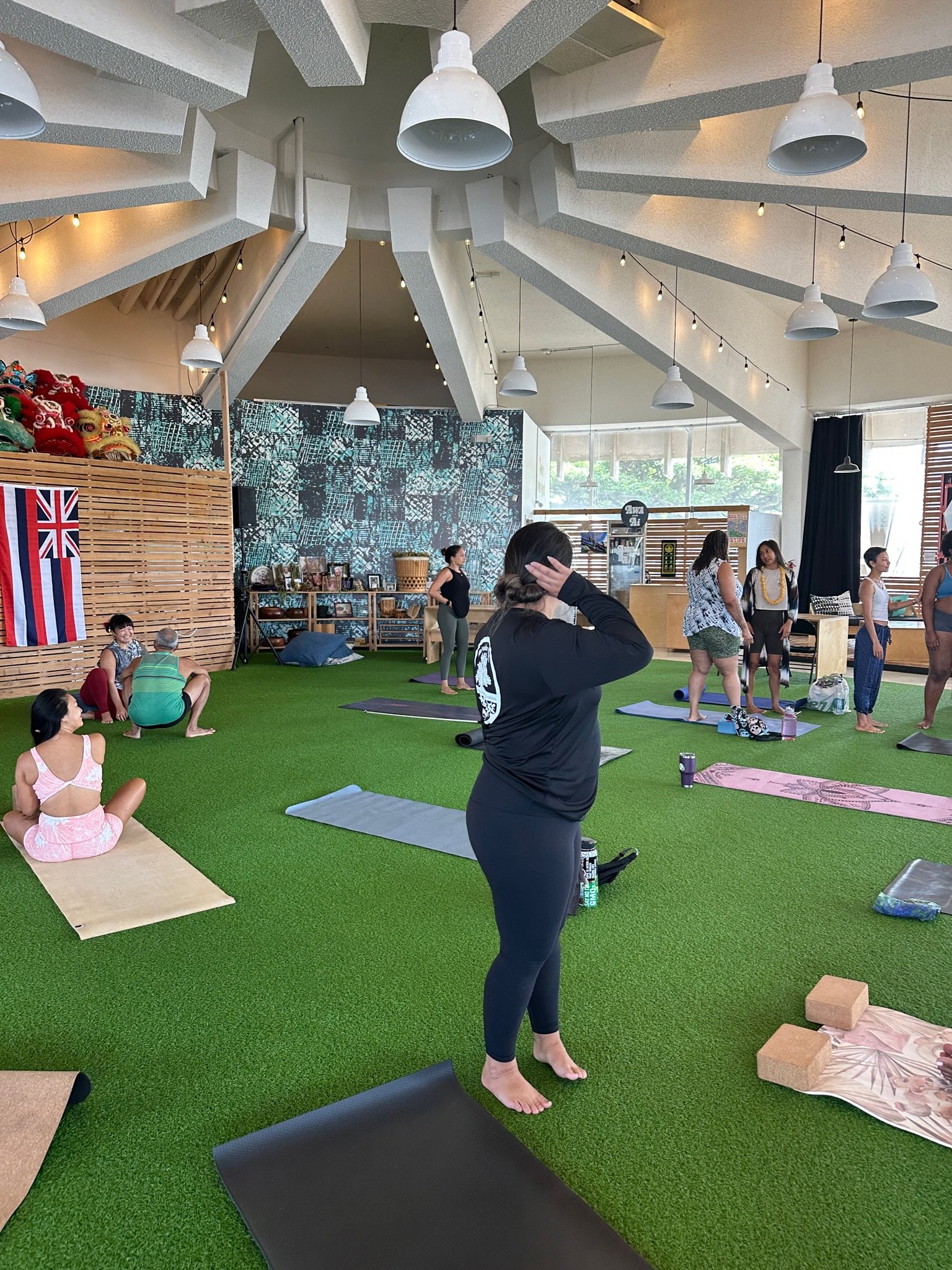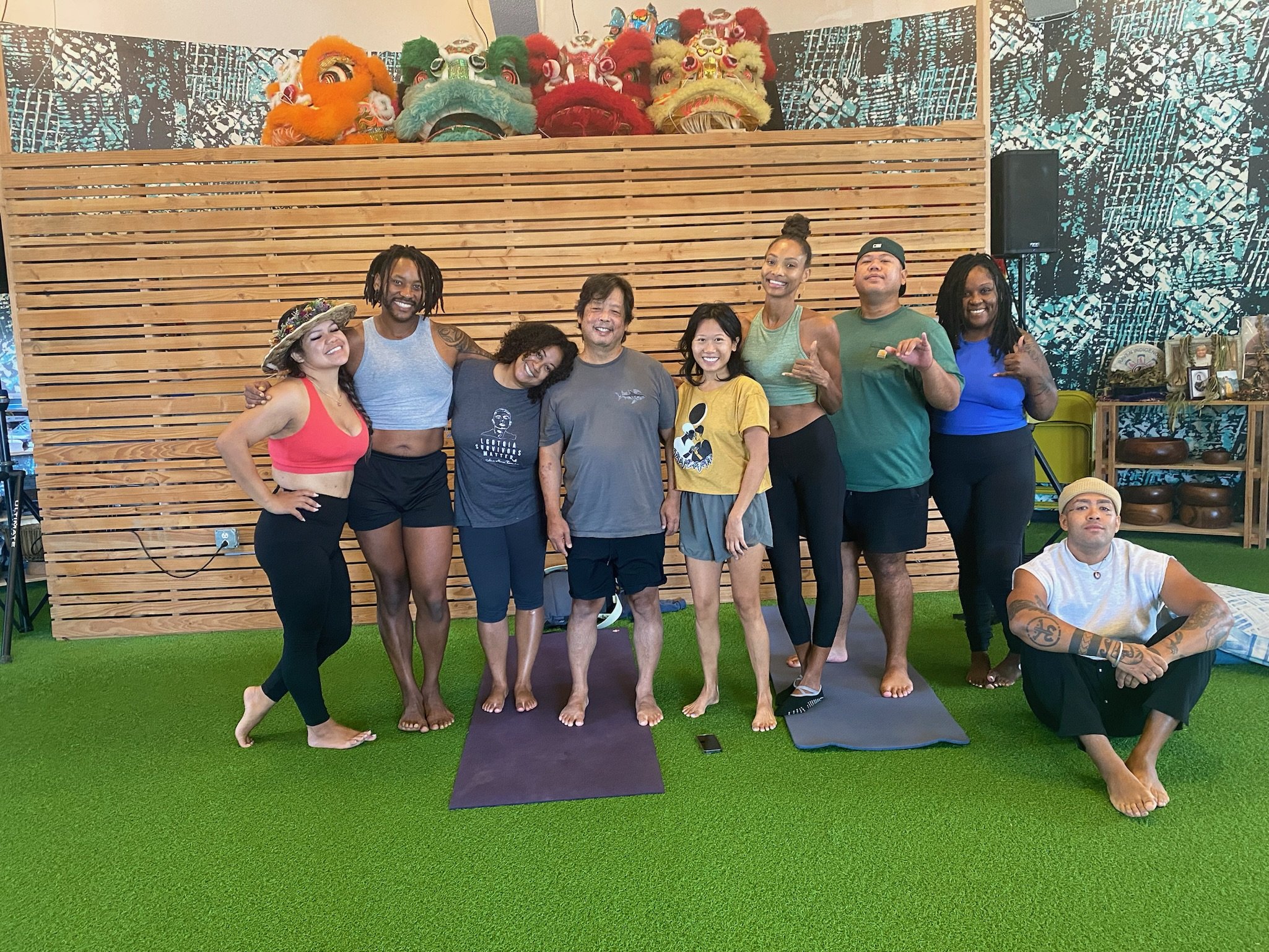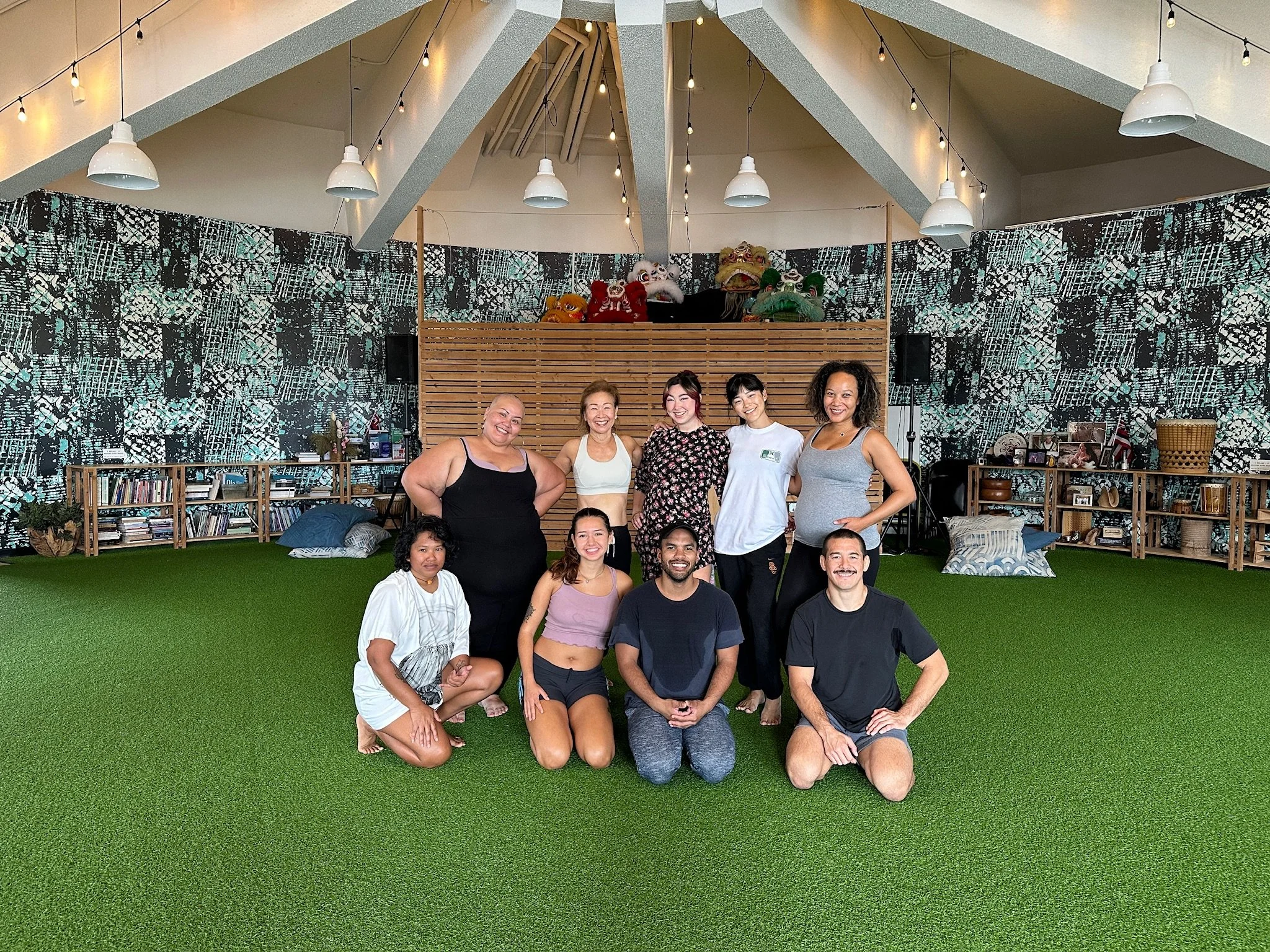What does Accessibility in Yoga Actually Mean?
It may not be what you think.
March 22, 2024 | Honolulu, O’ahu
This month, we would like to recognize Developmental Disabilities Awareness Month (DDAM) celebrated every March. DDAM brings awareness to the contributions of people with developmental disabilities and encourages everyone to think about how people with and without disabilities can best support one another. When you hear the word ‘disability,’ you may have a preconceived idea of what that looks like or means. However, many disabilities are not visible and can impact different facets of a person’s life – mobility, cognition, independent living, hearing, vision, etc. Some of the most common non-visible disabilities include Alzheimer’s, anxiety and/or depression, arthritis, deafness, diabetes, PTSD, ADHD/ADD, bipolar disorder, and traumatic brain injury. According to the CDC, developmental disabilities are, “A group of conditions due to an impairment in physical, learning, language, or behavior areas…these conditions begin during the developmental period, may impact day-to-day functioning, and usually last throughout a person’s lifetime.”
Yoga is often advertised as a practice that promotes a variety of health benefits. Unfortunately though, the portrayal of yoga in mainstream media is generally focused on a specific demographic stereotype of who is to practice yoga. Imagery of yoga in mainstream media often lacks representation of disabilities and communities of color. However, yoga has been found to be beneficial for everyone! A 2020 study published in the International Journal of Yoga found adults with intellectual and developmental disabilities who participated in yoga saw significant improvements in lower-body strength, upper-body strength, and agility and balance. Organizations like Mind Body Solutions have made it their mission to increase access to yoga for all people. Matthew Sanford, founder of Mind Body Solutions, is living proof of the transformative effect that yoga can have on the mind and body. Paralyzed from the chest down at the age of 13 and beginning yoga at 25, Matthew is an internationally recognized yoga teacher who has pioneered an approach to yoga that makes it accessible to all, regardless of their level of ability. Organizations like Mind Body Solutions encourage us to address barriers to entry in yoga practice and explore the possibilities of making it more accessible for all.
The World Health Organization describes barriers as “factors in a person’s environment that, through their absence or presence, limit functioning and create a disability.” Anajali Rao and Jivana Heyman of Accessible Yoga Association released a podcast where they discussed barriers to yoga and the “Nuances of Accessibility in Yoga.” Anjali says,
“Accessibility is not only talking about how we make Asana accessible, but how do we make the teachings accessible? How do we connect the teachings to the times that we live in [and make it] approachable and relatable,… identify the barriers to access and see how we can remove those barriers in different ways… accessibility is about all of that, it is not only offering the physical practice in a way which is accessible, but all the other parts of yoga as well.”
As Anjali suggests, we believe it is important to not only think about the practice of yoga itself, but also access to the practice as well. This month, we are reflecting upon how we at Project Koa Yoga (PKY) view accessibility in yoga. We asked our teachers to share their thoughts on a few questions focused on this topic. Here are their responses. Please note that we kept responses anonymous to ensure confidentiality.
How do you view accessibility in yoga?
Twisting, Spiraling, and Grounding Class with Stephanie
“Every single human being has a right to equal access to yoga. Imagine what a beautiful world it would be if all sentient beings were able to practice [in] yoga, empowering themselves to awaken spiritually and be free!”
“Accessibility to me is exactly that word…accessible. Just because someone is ʻdifferentʻ in some way, shape, or form doesn’t mean they are excluded from doing a certain thing.”
“Accessibility in yoga is vital as it not only provides conditions for participation, but also promotes belongingness and community... Accessibility might include accessibility of a physical space, financial access, transportation, childcare, and so on.”
What do you do to make your classes accessible?
Ganja Minded Yoga with Keith and Victoria
“…I consciously practice with others in a way to meet them wherever they may be each moment in their body, in their mind, in their heart. This includes offering variations of asanas that many times use props, different perspectives and interpretations of the yamas, niyamas and other limbs and teachings while honoring the lineage and roots of yoga.”
“Not all yoga classes are accessible and teachers sometimes don’t take the extra steps to make their classes accessible. That needs to change, because yoga can be for everyone. I try my best as a yoga teacher to make my classes more accessible to those that attend. A simple conversation with the student can prepare you to cater your class around them. Whether it be through modifications of the poses with using blocks, straps, a chair, or even using the wall! Taking the poses slower. Checking in with your students during the class or just watching your students can make a world of a difference. Before I start my classes I always preface that students have complete autonomy over their bodies and practices and if something doesn’t sit right within themselves they don’t have to do it, and that itself opens up the accessibility part of the practice.”
“When considering class offerings, I will ask myself, ‘who might I be leaving out in my offering?’ In my classes I often also consider all of the different ways bodies can move and hope to provide a variety of choices for folks to participate in a way that suits their body at that moment. I also think about emotional access - ways that sometimes being in stillness or quiet or connecting with self can be really activating and that folks are welcome to participate in the practice in a way that they choose.”
How would you describe PKY’s views on accessibility?
Yoga Teacher Training 2023 Cohort
“Simply put, PKY was born by two amazing women who believed yoga and wellness should be accessible to everyone. This has been our mission all along with [a] focus on Kanaka Maoli, BIPOC and QTIA2SMāhū+ because we’ve been oppressed way too long and visualize a life of true liberation.”
“Accessibility requires an ongoing and active process of reflection and a willingness to receive feedback and be responsive to that feedback. One of the gifts of being able to be part of PKY is that we have the opportunity to share yoga in a way that increases access.”
More than one billion people worldwide have some type of disability. Last year (2023), about 1 in 5 adults identified as a person with a disability in Hawai’i. Nearly 15% of the world’s population has some type of disability, so it’s safe to say we probably know of someone with a disability or may be a person with a disability ourselves. Here at PKY, we are actively aware of the barriers to entry for practicing yoga and we welcome feedback from our community members on ways we can increase accessibility.
If you need ANY accommodations for attending our offerings in Honolulu, please email us and we will work with you to best meet your needs. No matter what, your comfort, safety, and health is our top priority.
Additionally, we welcome you to join us in our journey to collective liberation through yoga. If you know of a community who would benefit from trauma-informed yoga, please reach out to us and we can help open the doors to new possibilities!
Connect with us!
Instagram: @projectkoayoga
Join Us at our Upcoming Offerings!
Yoga with our Ancestors with Stephanie
Tomorrow, March 23 at 9:30am, Ka Waiwai
Come honor your past and present loved ones through the transcendent power of yoga!
BOUNCE! Dance-Inspired Fitness Class with Cleo
March 30 at 9:30am, Ka Waiwai (OPEN TO ALL!)
The ULTIMATE energy and mood boost you have been looking for! Come get hype with us and hang out with empowering community.
Free Prenatal and Postpartum Yoga (Virtual or In-Person)
Every Wednesday at 2pm in partnership with Healthy Mothers, Healthy Babies
Come relax your mind and body as you prepare and/or recover from birth.












